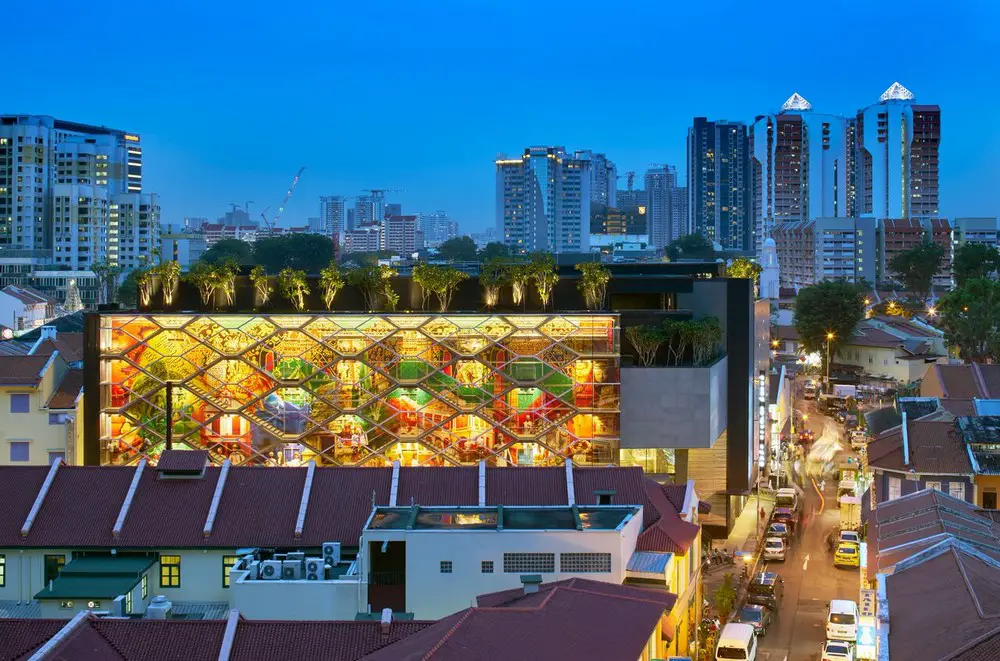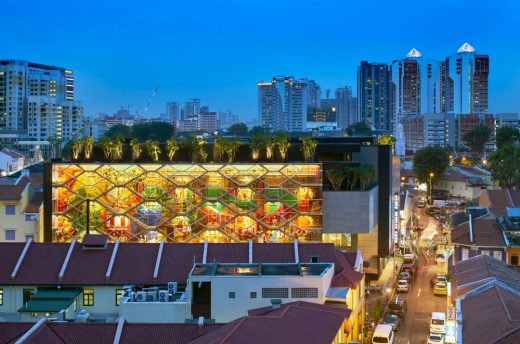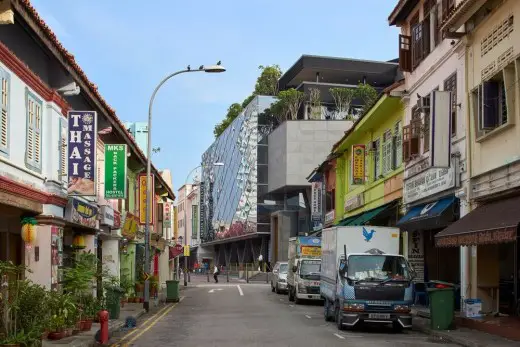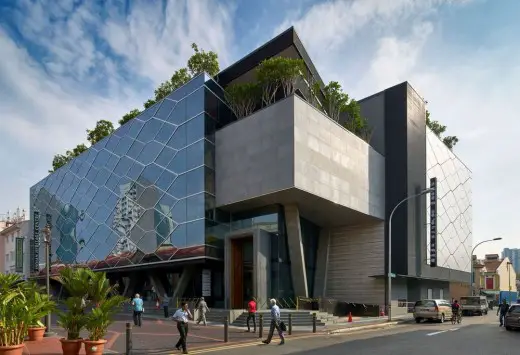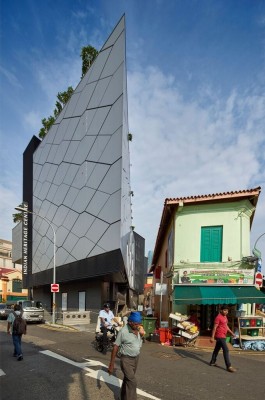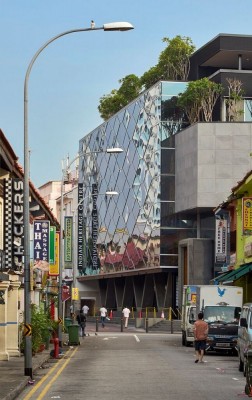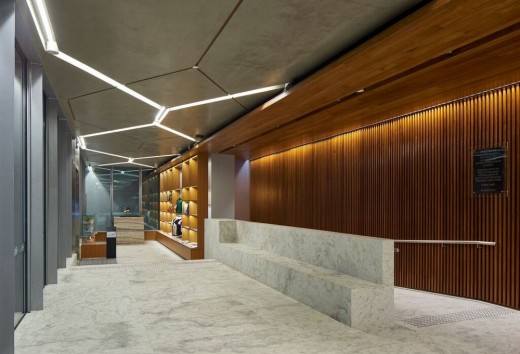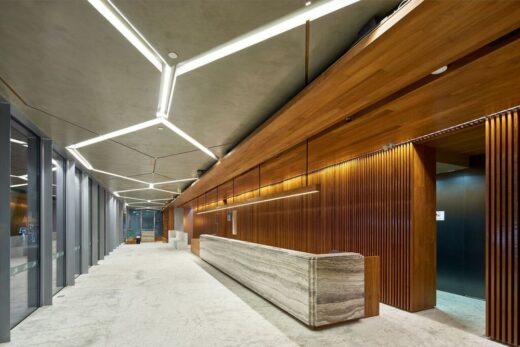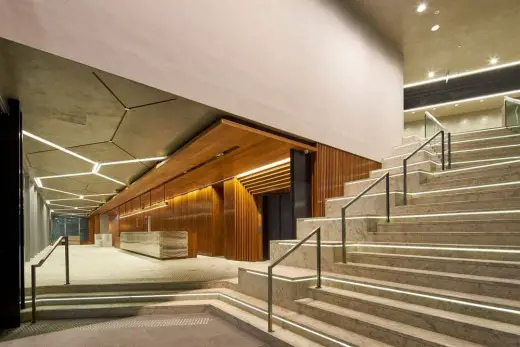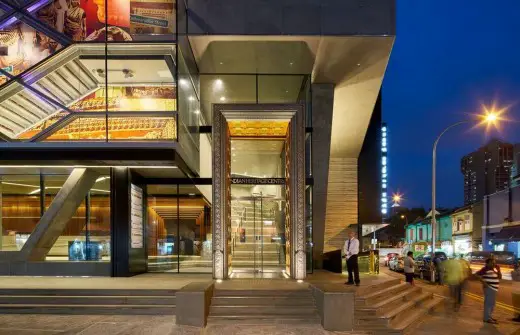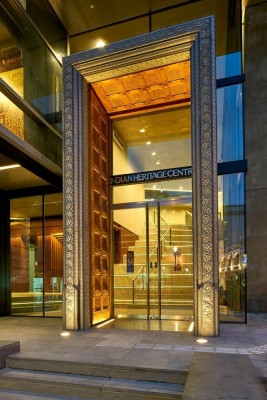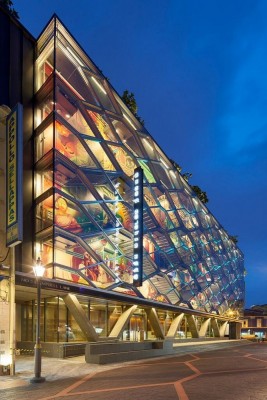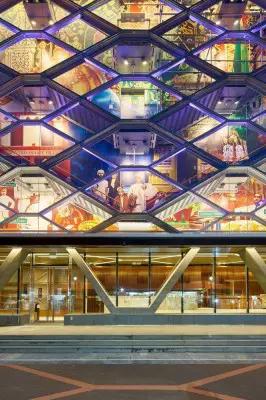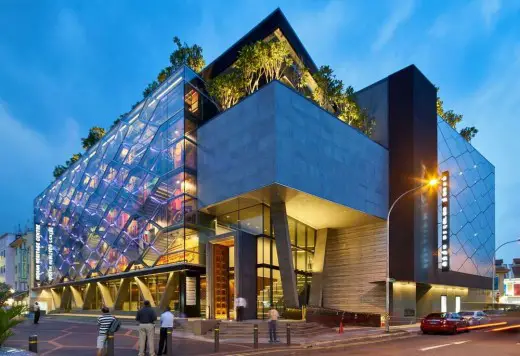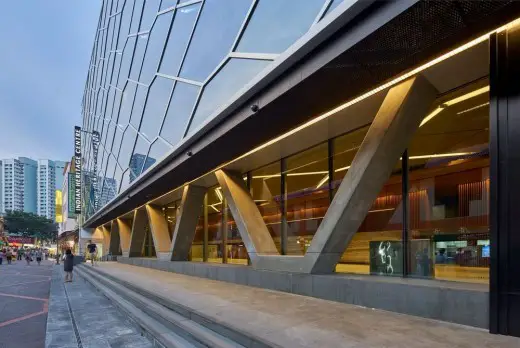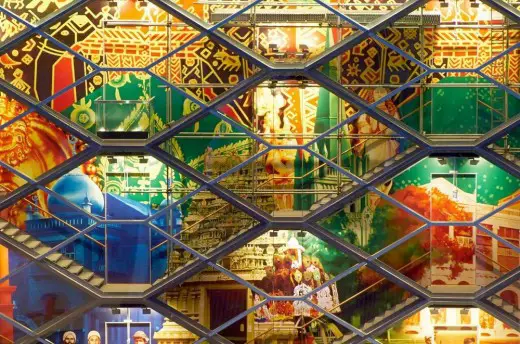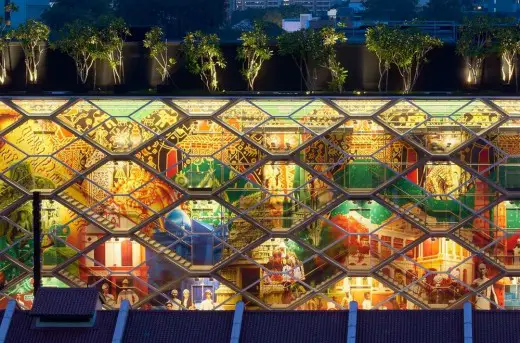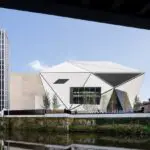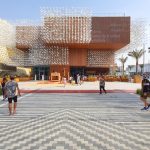Indian Heritage Centre, Gallery Singapore, Images
Indian Heritage Centre in Singapore
Contemporary Exhibition Space, Southeast Asia design by Robert Greg Shand Architects and Urbnarc
11 Mar 2016
Indian Heritage Centre
Design: Robert Greg Shand Architects and Urbnarc – Urban Design and General Consultants
Location: Singapore
The National Heritage Board wanted a sustainable contemporary building that would embrace the vibrant streetscape of the area and its people.
Singapores first Indian Heritage Centre (IHC) would feature small-scale museum facilities as well as community and educational spaces.
The space requirement was for two large galleries for the permanent collection, a special gallery for changing exhibitions, and an activity space for smaller groups that could be closed off when in use, or opened up to complement the special exhibition gallery.
In terms of energy efficiency, the brief stipulated that while the environmental control requirements were to be strictly adhered to for the galleries (relative humidity and temperature), the building should achieve a minimum Green Mark GOLD rating.
The concept and design
The diversity and multi-faceted nature of Indian culture is captured in the use of a translucent shimmering façade to create an impression of the IHC as a shining jewel in the day, and transforming into a glowing lantern at night.
The most distinctive motif of the building is a pattern created from the geometry of the baoli, an Indian stepped well that is a lifeline and traditional source of water, as well as a meeting point for the community.
The baoli also represents an active environment where the young and old
interact, stories are told, and tradition is passed on.
The baoli is translated onto the façade via the composition of the curtain wall glazing, with staircases serving as a three-dimensional jali (intricate ornamental openwork typically found in Indian and Islamic architecture), modulating light, air and views between the streetscape and the galleries.
In opening up the gallery experience to the street, visitors to the IHC become
Actors against the colourful gallery wall, enticing passers-by to look in and engage with the building.
The concept and design
Another design inspiration is the five-foot way, which refers to the traditional five-foot wide covered pedestrian walkways along rows of shophouses, usually found in Singapore and Malaysia. This concept has been expressed as a vertical circulation core in the façade of the IHC.
Staircases within the façade provide access between the galleries, and afford visitors a visual connection to the street. Where there are no stairs, apertures in the gallery wall act as small balconies for the display of changing exhibits that are visible from the street as well as the gallery further opening up the IHC experience to passers-by in the street below.
The galleries were conceptualised as repositories of calm and reflection, and offer visitors a respite from the hustle and bustle of Little India.
Materials and lighting were designed to focus the visitor experience on the objects and exhibits within the galleries. As the galleries are relatively small, dark surfaces are used to increase the perception of depth, with lighting focused on the artifacts, which appear to float within the space. The oscillation between light and dark, openness and closure as visitors move between the galleries via the façade staircase enhances the visitor experience and reconnects them with the street outside.
A unique part of the building is the design of the façade curtain wall glazing. Theentire curtain wall is suspended from the upper row of reinforced concrete landings. To keep steel member sizes to a minimum and provide additionalsupport, stainless steel tension wires were employed, while lateral movement is controlled via connections to concrete landings at all levels.
The artisanal features
The intricately carved entry portal is the most significant architectural
element of the building at street level, and an important element in traditional Indian architecture. The objective was to create an architectural language for the structure of the building, with the entry portal defining its identity.
The portal was carved in south India from three large blocks of granite, in a
village near Mahabalipuram (a UNESCO heritage site) in Tamil Nadu. The
carving gives a tactile quality to the building entrance, in contrast to the utilitarian and bare off-form finish of the other columns.
A carved five-metre-high teak door is tucked inside the portal, providing a further layer of richness and inviting visitors to approach and touch the building.
Photographs: Aaron Pocock Photography
Indian Heritage Centre in Singapore images / information from Robert Greg Shand Architects
Address: 5 Campbell Ln, Singapore 209924
Phone: +65 6291 1601
Architecture in Singapore
Singapore Architectural Projects
Singapore Architectural Designs – chronological list
Singapore building designs selection:
Design: Rem Koolhaas Architect / OMA
Singapore Tower
Moulmein residential tower
Design: WOHA Architects
Moulmein Rise Singapore
The Interlace Singapore Residential Development
Design: Ole Scheeren of OMA
The Interlace Singapore Complex
The Boutiq Singapore
Design: Broadway Malyan
The Boutiq Singapore
Design: Kohn Pedersen Fox Associates
Marina Bay Financial Center Singapore
Comments / photos for Indian Heritage Centre in Singapore page welcome
Website: Robert Greg Shand Architects

